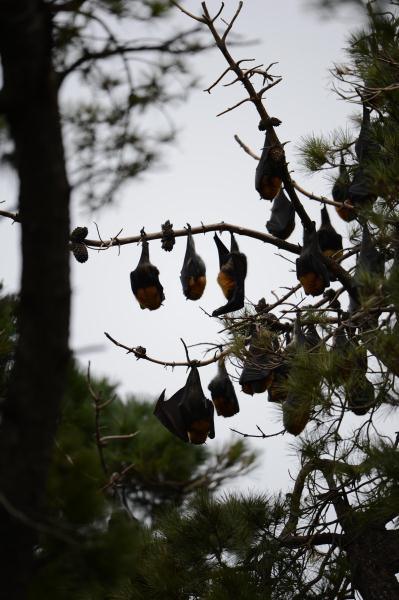By NOEL MURPHY
GEELONG’S Eastern Park could be harbouring up to 17,000 potential killers if a Medical Journal of Australia warning on bats and lyssavirus is accurate.
According to researcher Dr Joshua Francis, all Australian bats should be considered deadly sources of the rabies-like virus “unless proven otherwise”.
Transmission of the disease from infected humans to other humans was “theoretically possible”, he said.
Eastern Park is home to a colony of as many as 17,000 bats, or grey-headed flying foxes. The population varies across the year and can be especially susceptible to hot weather.
Dr Francis, a paediatric infectious diseases specialist at the Royal Darwin Hospital, helped diagnose the first case of the disease in an Australian child.
“Australian bat lyssavirus (ABLV) infection in humans is rare but fatal, with no proven effective therapy,” he said.
“All Australian bats (flying foxes and micro bats) should be considered to be carrying ABLV unless proven otherwise.
“Any bat-related injury – bite, scratch or mucosal exposure to bat saliva or neural tissue – should be notified immediately to the relevant public health unit, no matter how small the injury or how long ago it occurred.”
Three people have died in Australia of bat lyssavirus since it was recognised in 1996, including an eight-year-old boy after a bat bite three weeks earlier.
Lyssavirus can take weeks, even years, to develop after a bite or scratch.
Dr Francis called for greater awareness among health care workers and the public about the potential danger posed by bats.
“Wounds caused by bat may seem innocuous but any potential abrasion or penetration of skin or mucous membranes should be taken seriously,” he said.
“Human-to-human transmission of ABLV has not been reported but is theoretically possible.”
Large numbers of grey-headed flying-foxes inhabit pine trees near Eastern Park’s golf course clubhouse.
The permanent colony ranges in number between several hundred to 5000 over winter, rising up to 17,000 in summer.







